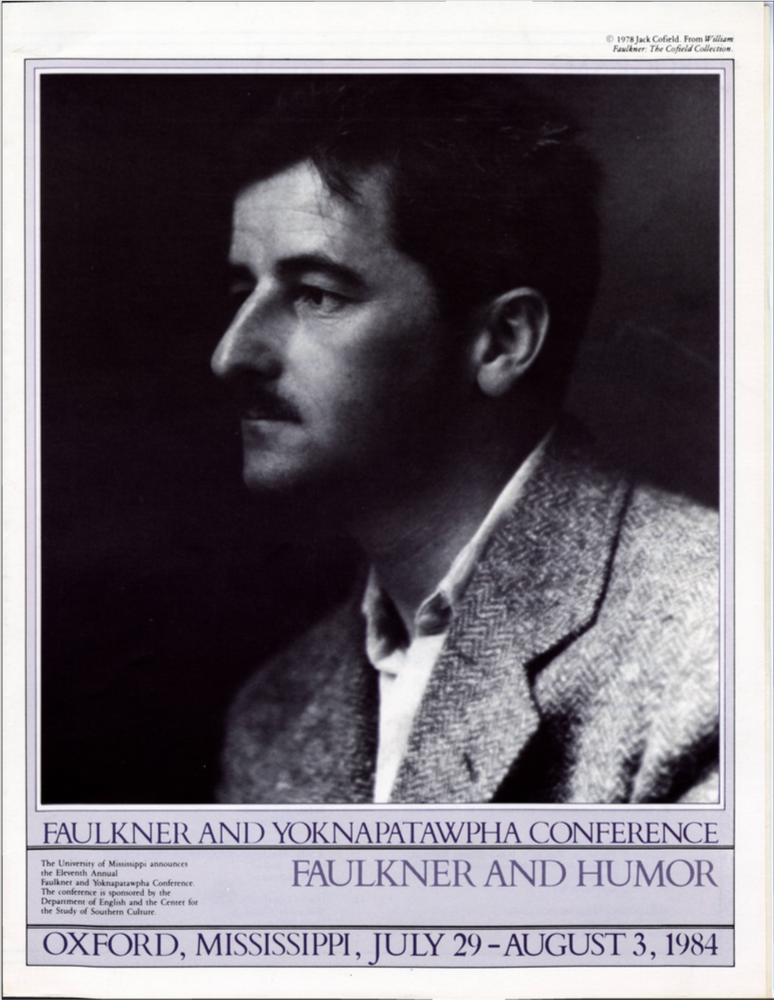
The Levity of Light in August
Location
Ole Miss Union Ballroom
Start Date
1-8-1984 9:00 AM
Description
"Hilarious" is not a word we usually associate with Light in August. But once we discover some of the games Faulkner is playing beneath the not-so-calm surface of his book, we find a humor as light--and as dark— as the great ironists of the past such as Swift or Twain. But Faulkner’s technique rests solidly among the Modernists, using external structures and free associations, like Joyce, establishing his Odyssey parallel to, say, the Lotus Eaters by filling that chapter of Ulysses with references to flowers. Similarly, because Faulkner paralleled the 21 chapters of Light in August with the 21 chapters of the St. John gospel, events or obsessions in each chapter which may seem inexplicable or oddly placed turn out to reflect themes from the corresponding chapter in John. And because he expanded John’s themes with related material from Frazer’s encyclopaedic study of ritual and belief, The Golden Bough, behavior in Light in August which may seem savage or singular turns out to have precedent in primitive practices which Frazer himself (and probably Faulkner) found amusing. Still another source of humor is based on the disparity between Faulkner's suggestive parallels with traditional Christian figures (particularly the Holy Family) and their mythic predecessors, again, as described in Frazer. The paper will focus on Light in August’s chapters 6 and 10, in John, the multiplication of the loaves and the discourse of the Good Shepherd.
Relational Format
Conference Proceeding
Recommended Citation
V., Virginia Hlavsa, "The Levity of Light in August" (1984). Faulkner and Yoknapatawpha Conference. 17.
https://egrove.olemiss.edu/fy/1984/schedule/17
The Levity of Light in August
Ole Miss Union Ballroom
"Hilarious" is not a word we usually associate with Light in August. But once we discover some of the games Faulkner is playing beneath the not-so-calm surface of his book, we find a humor as light--and as dark— as the great ironists of the past such as Swift or Twain. But Faulkner’s technique rests solidly among the Modernists, using external structures and free associations, like Joyce, establishing his Odyssey parallel to, say, the Lotus Eaters by filling that chapter of Ulysses with references to flowers. Similarly, because Faulkner paralleled the 21 chapters of Light in August with the 21 chapters of the St. John gospel, events or obsessions in each chapter which may seem inexplicable or oddly placed turn out to reflect themes from the corresponding chapter in John. And because he expanded John’s themes with related material from Frazer’s encyclopaedic study of ritual and belief, The Golden Bough, behavior in Light in August which may seem savage or singular turns out to have precedent in primitive practices which Frazer himself (and probably Faulkner) found amusing. Still another source of humor is based on the disparity between Faulkner's suggestive parallels with traditional Christian figures (particularly the Holy Family) and their mythic predecessors, again, as described in Frazer. The paper will focus on Light in August’s chapters 6 and 10, in John, the multiplication of the loaves and the discourse of the Good Shepherd.

